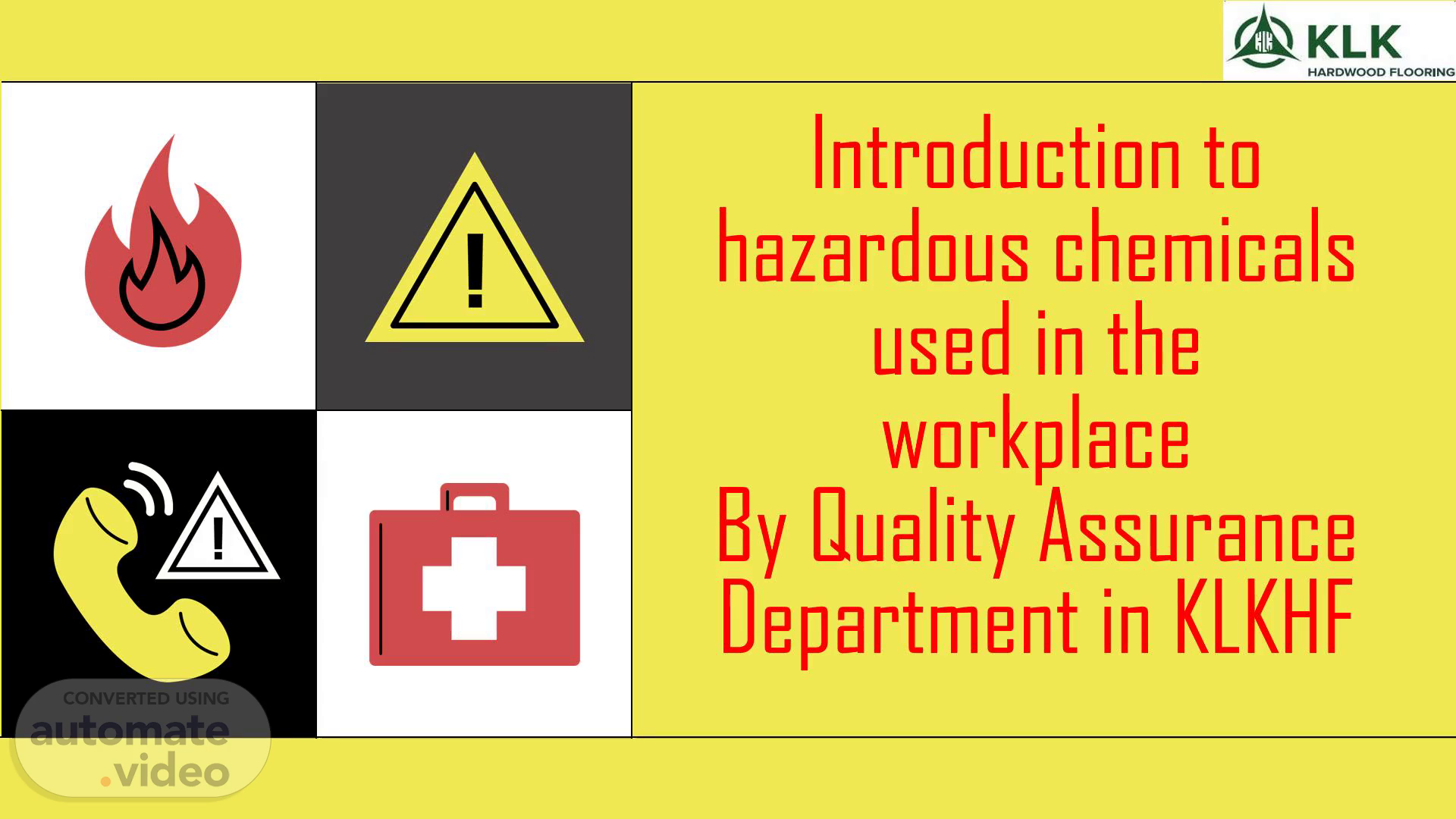Scene 1 (0s)
[Audio] Introduction to hazardous chemicals used in the workplace By Quality Assurance Department in KLKHF.
Scene 2 (9s)
[Audio] Talk Overview Hazardous Chemicals Used by QA Function of the Curcumin Test Hydrochloric Acid Salicylic Acid Curcumin Powder Ethanol Schedule Waste Management Tips By Supervisors & Conclusion.
Scene 3 (23s)
[Audio] Hazardous Chemicals Used by QA This presentation highlights the hazardous chemicals commonly used by the QA team during curcumin testing, focusing on the potential risks and necessary safety precautions. Various chemical categories such as solvents, acids, bases, and organic reagents are routinely handled in the laboratory to ensure accurate and reliable analytical results. These chemicals can pose risks such as flammability, toxicity, corrosiveness, or reactivity, which may lead to health issues or environmental damage if not managed properly. Therefore, identifying potential hazards, understanding the routes of exposure (such as inhalation, skin contact, or accidental ingestion), and referring to chemical Safety Data Sheets (SDS) are essential steps in mitigating risks..
Scene 4 (1m 19s)
[Audio] Function of the Curcumin Test The Curcumin Test is a simple and effective chemical method used to detect the presence of borate preservatives in wood. These preservatives are commonly applied to wood to protect it from biological threats such as fungal decay, insect damage especially from termites and general rot. The test relies on the chemical reaction between curcumin a natural compound found in turmeric and borates, which produces a distinctive red or orange-red color when borates are present. This color change occurs because curcumin forms a colored complex with borate ions, making the test both sensitive and easy to interpret visually. The Curcumin Test is particularly valuable in the field for quick on-site assessments, helping inspectors, contractors, and researchers confirm the effectiveness or presence of borate treatment in wood structures without the need for sophisticated equipment..
Scene 5 (2m 16s)
[Audio] Hydrochloric Acid Prevention -Use protective gloves and goggles -Ensure proper ventilation -Store in a cool, dry place Risks -Highly corrosive -Can cause severe burns -Harmful if inhaled Danger Always read and follow the safety data sheet (SDS)..
Scene 6 (2m 38s)
[Audio] Salicylic Acid Prevention -Wear protective clothing -Avoid inhalation -Store in tightly sealed containers Risks -Irritant to skin and eyes -Harmful if ingested Danger Always read and follow the safety data sheet (SDS)..
Scene 7 (2m 56s)
[Audio] Curcumin Powder Prevention -Use dust mask if airborne particles are present -Store in a dry, cool environment Risks -Generally low toxicity -May cause respiratory irritation if inhaled Danger Always read and follow the safety data sheet (SDS)..
Scene 8 (3m 17s)
[Audio] Ethanol Prevention -Keep away from heat and open flames -Use in well-ventilated areas -Wear protective gloves Risks -Highly flammable -Can cause dizziness and headaches Danger Always read and follow the safety data sheet (SDS)..
Scene 9 (3m 37s)
[Audio] Schedule Waste Management Tips By Supervisors At Work Place Ensures safety and hygiene in the workplace Waste Management Life Cycle Label and segregate waste (chemicals) Responsibilities Of Supervisor Encourage feedback to improve waste practices.
Scene 10 (3m 57s)
[Audio] Conclusion Proper handling and awareness of hazardous chemicals are essential for workplace safety. Always follow safety guidelines and use appropriate protective equipment. Thank you..
